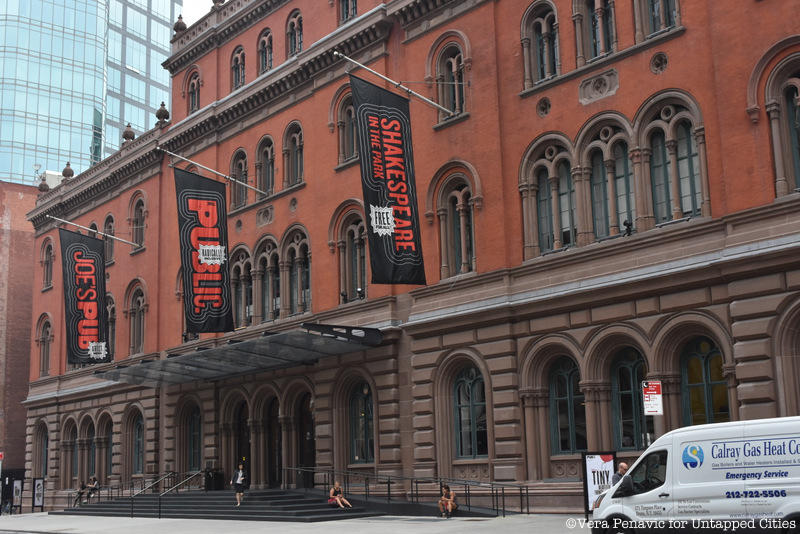5. Astor Library | The Public Theater

In his will, wealthy financier and notable New Yorker John Jacob Astor pledged $400,000 to the creation of a library. It would take three architects and over three decades of construction for the library to be complete. As construction continued in stages, the first part of the Astor Library, one of New York City’s first, was opened in 1854. By the time of the library’s opening, librarian and book collector Joseph Green Cogswell had acquired 80,000 volumes for its stacks. The south wing of the library building on Lafayette Street was designed by architect Alexander Saeltzer who created an open, two-story-high hall with vaulted ceilings, surrounded by gilded balconies. In 1898, after years of financial struggle, Astor trustees agreed to become part of the new public library at 42nd Street and Fifth Avenue. In the new building, now known as the Stephen A. Schwarzman Building, the Astor collection was combined with that of the Lenox Library to form The New York Public Library.
After the Astor Library moved to its shared space on Fifth Avenue, the Hebrew Immigrant Aid Society bought the building on Lafayette Street. Architect Benjamin Levitan made alterations to the building but kept many of the original columns, skylights, vaulted ceilings and other interior features. When the Aid Society sold the building to a developer in 1965, plans were made to demolish it. Fortunately, the 18-month old Landmarks Preservation Commission was able to save the Victorian building. The Astor Library was one of the first buildings granted salvation thanks to the The New York City Landmarks Law which was enacted in 1965. Other early notable victories achieved by the Landmarks Commission include the preservation of Carnegie Hall in 1960 and Radio City Music Hall in 1978.
When theatrical producer and director Joseph Papp was shopping for a place to open his own theatre, the commission suggested the Astor Library. Papp hired architect Giorgio Cavaglieri to transform the red brick Astor landmark into the New York Shakespeare Festival Public Theater. Papp would later go on to found “Save the Theaters,” a group in the 1980s that worked to prevent the loss of historic theaters in Manhattan’s Theater District and Cavaglieri would work on the conversion of the Jefferson Market Courthouse into the Jefferson Park Library. Now known simply as The Public, Papp’s theatre was one of the nation’s first nonprofit theaters when it opened in 1966. In the seven theaters housed inside, The Public puts on an annual season of new work as well as Free Shakespeare in the Park at the Delacorte Theater in Central Park, and The Mobile Unit which tours throughout New York City’s five boroughs. The Public is an “artist-driven, radically inclusive, and fundamentally democratic” theater “of, by, and for the people.”





